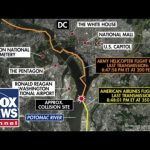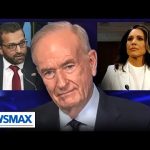In a scene reminiscent of a thrilling Hollywood blockbuster, yet decidedly more consequential, we find ourselves pondering the complexities of air navigation, heightened by recent happenings in the skies near Reagan National Airport. As reports flooded in, it became abundantly clear that this incident involved more than just routine piloting maneuvers. One has to wonder if the pilots were auditioning for Top Gun, considering the audacious nature of this aerial close shave.
The crux of the matter revolves around a Bombardier CRJ-701 regional jet and an inbound U.S. Army Black Hawk helicopter seemingly locked on a collision course like two tango partners headed for one another without a choreographer in sight. Now, who can say it better than Dr. Jeff Edwards, the former U.S. Navy expert who paints a detailed picture of what truly occurred? According to reports from various news outlets, the helicopter appeared to defy its low altitude limits, getting a little too comfortable at a height north of 2,400 feet, just moments before the collision. This deviation turned the skies into the Wild West, lacking the predictability and order one might assume the airspace, especially over such a busy corridor, should have.
Yet, the plot thickens when we bring night vision goggles into the mix. It’s speculated that these devices may have compromised the pilots’ peripheral vision, turning their expansive view into something resembling peering through a straw. In darkness, with the dazzling lights of the city below, the goggles tend to ‘bloom,’ creating a visual smorgasbord of confusion. One can almost imagine pilots squinting through the haze, contemplating whether those blinking lights belong to another aircraft or the local neon sign flashing happy hour specials.
Then there’s this fascinating concept known as “relative motion.” Humans aren’t naturally gifted at spotting objects that approach directly. Instead of a thrilling spectacle, it becomes reminiscent of those awkward high school dances where everyone hesitates to make the first move. Add in the cacophony of background lighting, and suddenly, even the most seasoned pilot might struggle to determine whether they’re aiming for a plane or mistaking it for a particularly bright tower on the ground.
And let’s not forget the potential for a third plane to unintentionally photobomb this misadventures flight scene. Air traffic control, like a frantic director on an overly complex action film set, tried to guide the pilots’ gaze, only for them to possibly get distracted by another plane taking off — an understandable gaffe when everything is bustling with activity.
So, as we sift through the details, the real question arises: what’s next? The aviation authorities will need to put their thinking caps on and untangle this kerfuffle to ensure that future aerial endeavors don’t involve unintended dogfights over the capital. It’s clear that each layer of technology and regulation was supposed to be the fail-safe; yet here we are, proving again that reality often defies even the strictest of plans.




